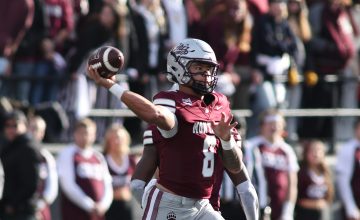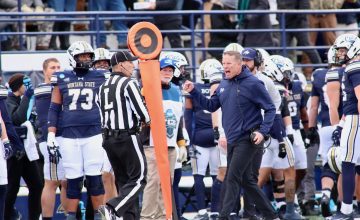Turn back the clock 20 years. The names and the games on the schedule for the opening weekend of Division I football in Montana would be accompanied by phrases like “Top 25 showdown”, “playoff implications” and “primetime matchups”, even if only one of Saturday’s openers is being played during primetime.
Hell, 20 years ago, McNeese State knocked the Bobcats and the Grizzlies out of the same FCS playoff bracket.
Saturday, the University of Montana hosts Northwestern State, a program with 12 conference titles and six Division I-AA/FCS playoff appearances in its history. But the Demons have not been to the postseason since 2004, which also marks NSU’s last trip to Missoula; Bobby Hauck’s Griz thrashed the Demons 56-7 in the first round of the playoffs that year, marking the third time in four seasons Montana hammered Northwestern State to start playoff runs.
Since 2004, NSU has had one winning season: a 7-6 mark in 2008. The program has not been to the playoffs in 19 years. Northwestern State is 12-28 in four seasons under Brad Laird, a former NSU quarterback who is still the second-leading passer in the school’s history. Montana has won 28 games against 12 losses in that same time span since Bobby Hauck returned to lead his alma mater leading up to the 2018 season.
“I was the defensive coordinator in 2004 that came to Montana the first round of the playoffs and that four-year stretch where we came three times, it seemed like just a part of our schedule,” Laird said on Tuesday. “We understand it’s a playoff atmosphere there and that hasn’t changed in 30 years. It’s a team that year in and year out has been able to compete in the playoffs. That’s where we want to be and that’s where we want to get back to.”
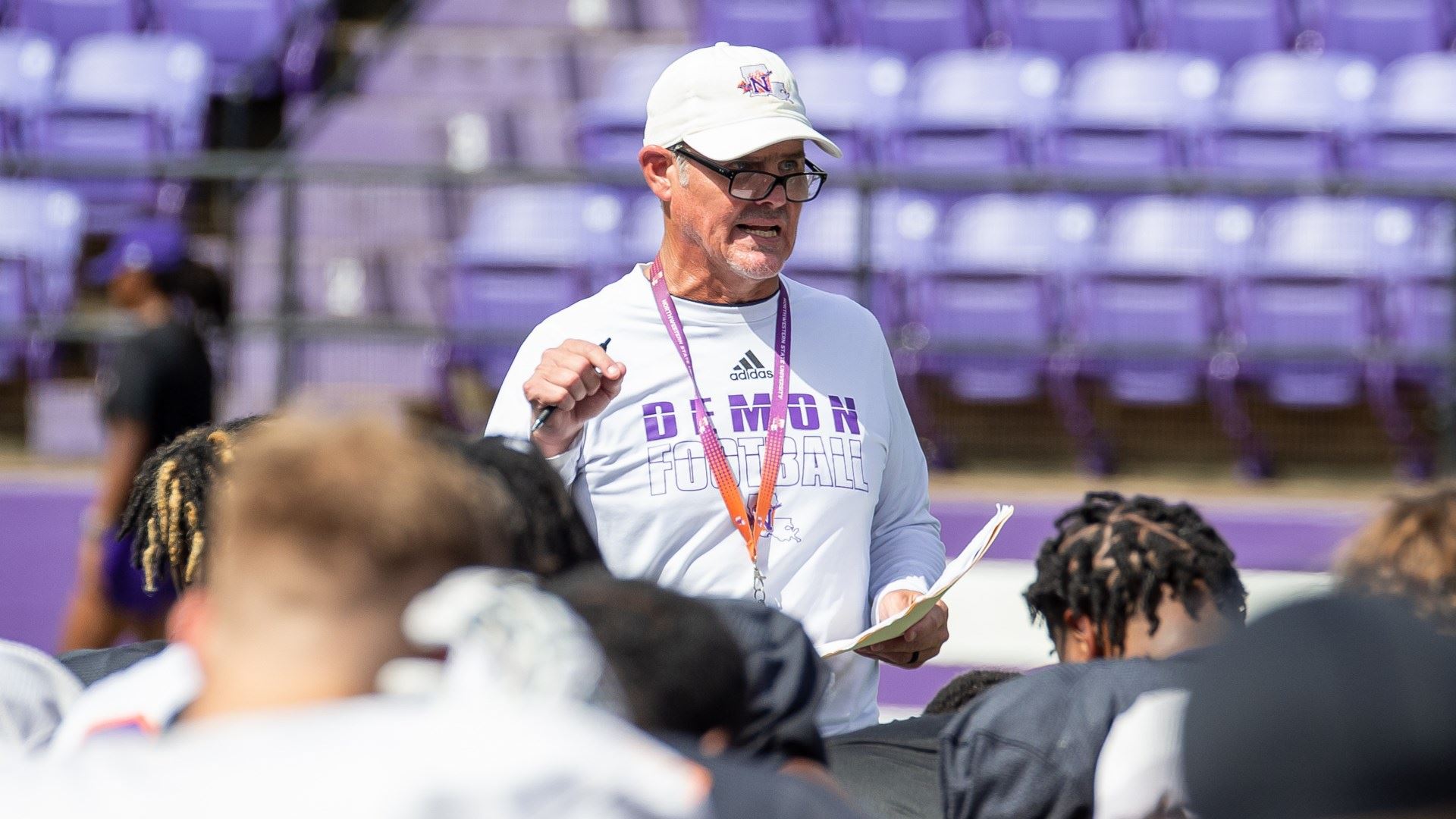
Meanwhile, another once-proud Southland Conference power opens its season 200 miles East of Missoula, across the Continental Divide. McNeese State, one of the conference’s founding members, has 15 conference titles and 11 playoff victories as they open the 2022 season under the lights of Bobcat Stadium against No. 4 Montana State, a team that played for the FCS national title last fall.
The height of the Cowboys’ program came in the late 1990s and early 2000s; McNeese State played for the FCS national championship in 1997, losing 10-9 to Youngstown State as the Penguins won their fourth national title in seven seasons under head coach Jim Tressell, who then went on to find superb success and unparalleled scrutiny at Ohio State. That same year, McNeese posted a 19-14 win over Montana in Missoula in the first round of the playfofs.
Top-ranked and top-seeded McNeese fell 34-14 in the 2002 Division I-AA title game to a Western Kentucky team led by Jack Harbaugh, the father of John and Jim Harbaugh, a legend who retired following the national title.
That same season 20 years ago, McNeese posted a 21-14 win over Montana State in MSU’s first playoff appearance in 18 years. The week prior, the Bobcats snapped a 16-year losing streak to the rival Griz.

That’s the only time Montana State and McNeese have played until Saturday. In the quarterfinals of the 2002 playoffs, the Cowboys beat Montana 24-20 in what ended up serving as Joe Glenn’s last game as the head coach for the Grizzlies.
McNeese has been better over the last 20 years than their rival Demons (the last football game each program played came last November 20 in a 24-20 NSU win, the first by NSU in Lake Charles, Louisiana in 1988.
The Cowboys won 10 games in 2003, 11 games in 2007, nine in 2009, 10 in 2013 and 10 more in 2015, their last conference championship season. But McNeese is 35-28 since then, respectable to be sure, but a far cry from the national powerhouse that boasted one of the best home field advantages in small-school college football.
McNeese went 376-192 (.667 winning percentage) from 1963 until 2015. Between 1993’s 10-win season and the last conference title season in 2015, the Cowboys posted 10 double-digit win seasons in 22 campaigns.
“Tradition doesn’t just go away and if you have had it over time at your institution, to light that fire, it doesn’t necessarily take years,” Montana State second-year head coach Brent Vigen said. “It just takes gaining a little momentum.”
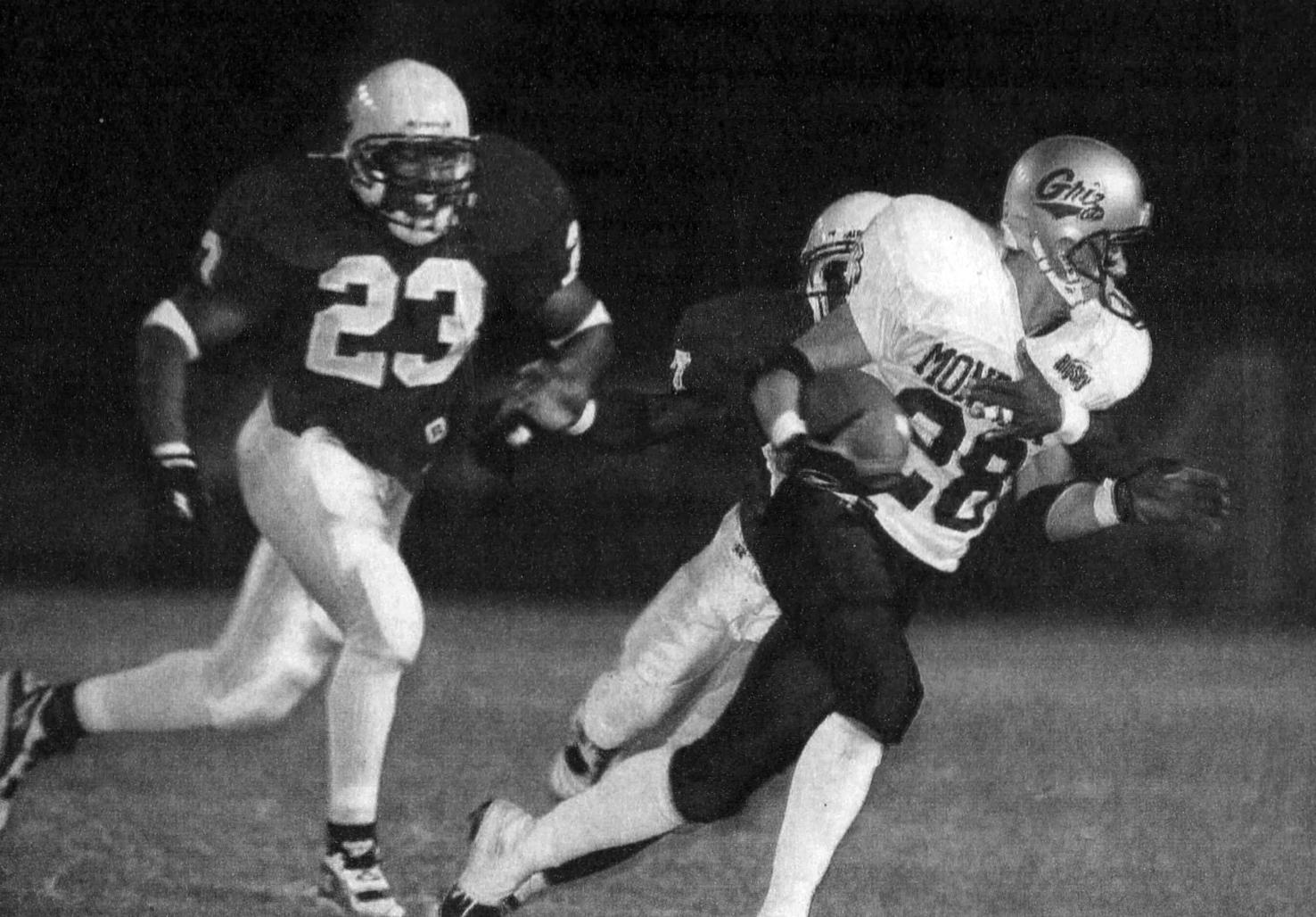
In the ever-changing world of college athletics, particularly Division I football, few if any conferences have experienced as much overturn during the last 20 years than the Southland Conference. Six of the league’s 10 football –playing members have been in the conference for less than 10 years and two — Lamar and Texas A&M-Commerce — are brand new in 2022.
The Southland was founded in 1963, the same year as the Big Sky Conference. And while the Big Sky has had plenty of movement — Idaho, Boise State and Nevada all moving to the FBS and out of the conference in the mid-1990s, Northern Colorado joining in 2006, the football league absorbing North Dakota, Southern Utah, UC Davis and Cal Poly in 2012, Idaho’s return in football in 2018, SUU and UND’s departures in recent years — the tumult pales in comparison to the Southland.
Abilene Christian, Arkansas State, Texas-Arlington and Trinity University founded the league with Lamar. Those four all left the league at some point. Lamar was in the league from 1963 until 1999 then rejoined the league in 2022. McNeese joined the Southland in 1972, making the Cowboys the longest-tenured football playing member. Northwestern State joined in 1987. Nicholls State joined in 1991 and Southeastern Louisiana joined in 1997. Houston Baptist, Incarnate Word, New Orleans all joined in 2013. Lamar and Texas A&M Commerce joined this year.
Meanwhile, the last four decades have seen all but one of its founding members leave for other conferences. Louisiana Tech (1971-1987), Louisiana-Monroe (1982-2006), North Texas (1982-1996) (1971-1982), Texas State (1987-2012), Texas-San Antonio (1991-2012) all left to chase FBS dreams at some point.
And last year saw another exodus. Sam Houston State, Central Arkansas and Stephen F. Austin all left the Southland. The Bearkats and the Lumberjacks joined the league in 1987 with NSU while UCA had been a Southland member since 2006.
“There’s been a lot of changes, especially over the last year or two with all those teams that left, a couple of those teams coming back, UIW (Incarnate Word) and Lamar back into the conference, adding Texas A&M-Commerce this season,” Laird said. “To talk about our conference and the Big Sky, these are the non-conference games you want to play. I know McNeese playing Montana State, you’ve seen Southeastern Louisiana make those trips, you’ve seen Sam Houston make those trips, whether it’s been non-conference or the playoffs.
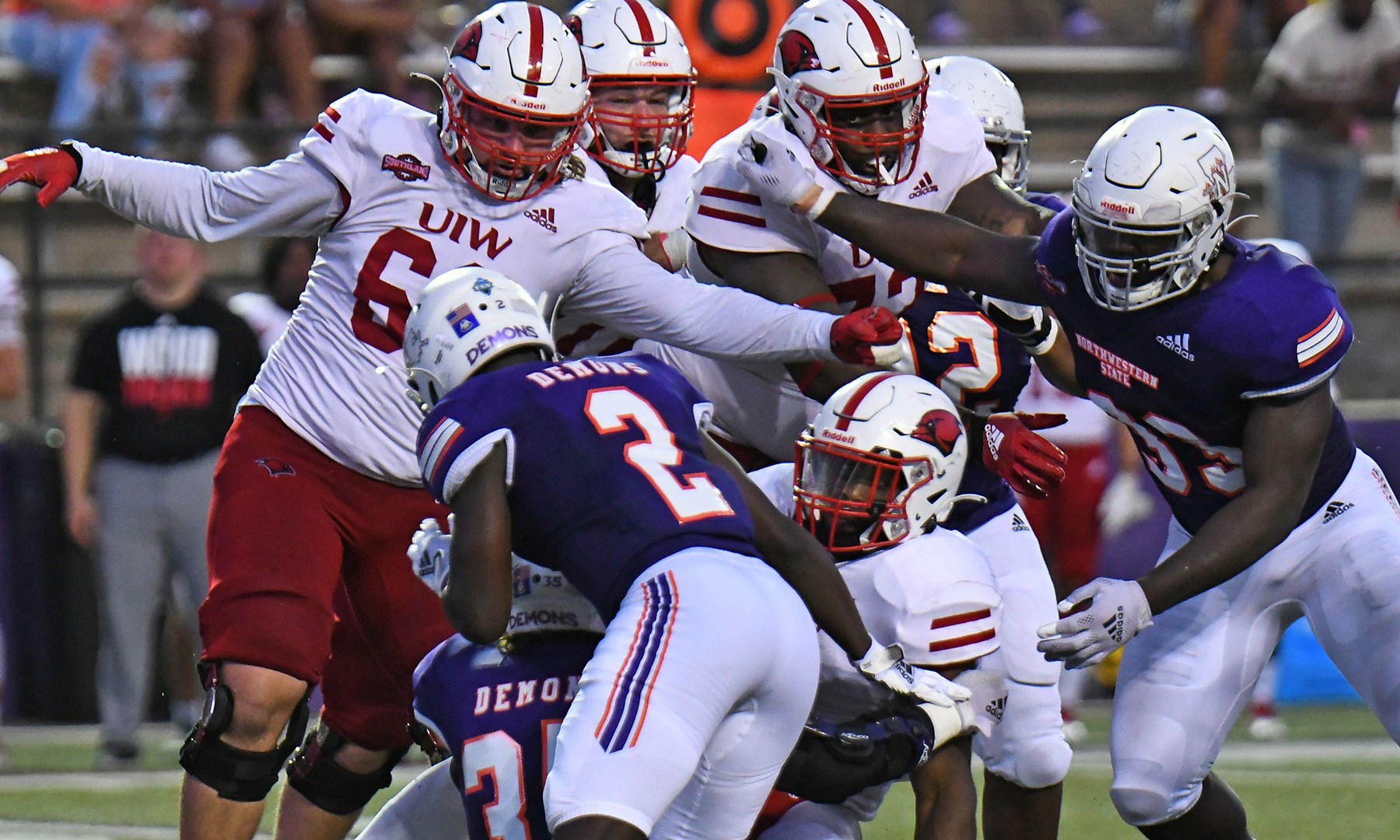
“The Big Sky is one of the top conferences in the country. The Southland has changed but it’s a good league. We are trying to be consistent nationally like the Big Sky.”
The evolution of the membership of the league is one factor that has caused the Southland to slip into the middle of the pack for FCS conferences. That’s accentuated by the departure of Sam Houston State, the 2021 spring season national champion and one of only two schools (Louisiana Monroe in 1987) from the league to win a Division I-AA/FCS title.
There’s also been the draw of coaches to big pay checks in the FBS. Frank Wilson was the head coach at McNeese State last season before taking an assistant job at LSU. FBS money is real, whether it comes in the form of coaches salaries, TV payouts or the allure of moving up to the top level of Division I football.
“It’s too bad because I think for the fans and for guys who have covered it or coached in games between the Big Sky and the Southland, the Southland is known for having great talent and athleticism and when you’d prepare for them, you’d always prepare for speed,” said Ty Gregorak, lead Big Sky analyst for Skyline Sports and a college football assistant coach between 2003 and 2018.
“I think it’s cool that both Montana and Montana State are playing FCS teams from Louisiana, different parts of the country. Even if McNeese isn’t McNeese how you and I think of it, it’s still McNeese State. It’s still a proud program that sells out its stadium and they play in one of the great venues in all FCS in Lake Charles.
“Northwestern State has had its runs too. We played them, when I was (linebackers) coaching at Montana in 2003 and 2004. I think it’s great for Week 1 matchups even if they aren’t Top 25 matchups.”
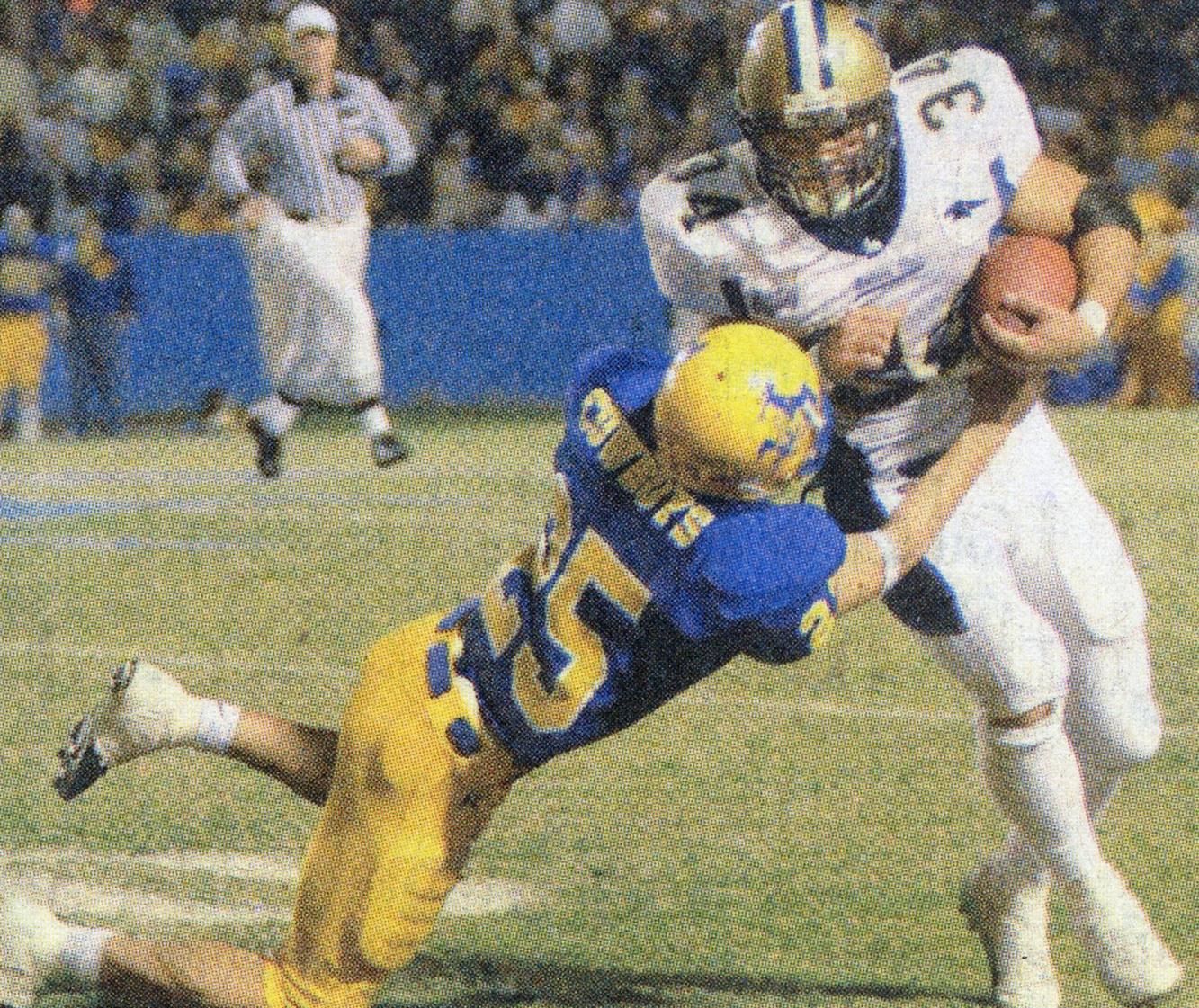
After Wilson resigned, McNeese State hired Gary Goff, who led Valdosta State to the NCAA Division II national championship last season. Goff played wide receiver at Valdosta State from 1993 until 1996, playing for famed Air Raid innovator Hal Mumme. He made a pair of stops coaching high school football in Georgia, a season at Iowa Wesleyan, two more at Southeastern Louisiana before stints at New Mexico State, Princeton and the West Virginia Wesleyan.
Goff coached at Tiffin from 2011 until 2018. After five straight losing seasons, he mounted three straight winning campaigns, including a 9-2 mark in 2018 that landed him the head gig at Valdosta.
“McNeese made the hire they did because of the success he had at Valdosta and there’s an expectation that this staff has to win like they’ve been winning,” Vigen said. “You couple those two things together with an institution, a community that rallies around their team, a coaching staff that expects to win, you can catch fire pretty quickly. That’s where we are talking to our guys where we have to live in the moment of where this team is right now. Don’t look at where they’ve been the last couple of years record wise. Expect their best.”
“I see them as a program that can easily catch fire.”

Montana State has 15 FCS playoff wins in its history dating back to 1978, when the subdivision was first created. Six of those wins have come since 2018. MSU is in the midst of a run like the one McNeese had between 1993 and 2015. As Goff enters his first game guiding the Cowboys, he sees the challenge his team faces as they come to Bozeman to take on the No. 4 team in the country.
“It takes us establishing our values again and we’re going have those values and we’re going to have standards and hold ourselves and each other accountable to them,” Goff said. “It’s got to be the right fit. I know as coaches we always want the biggest, fastest and strongest players but it’s more than that. We got to have the right fit. We got to have high character young men here that are eager to do something special as a group, not just an individual.”
Photos by Brooks Nuanez and contributed. All Rights Reserved.



